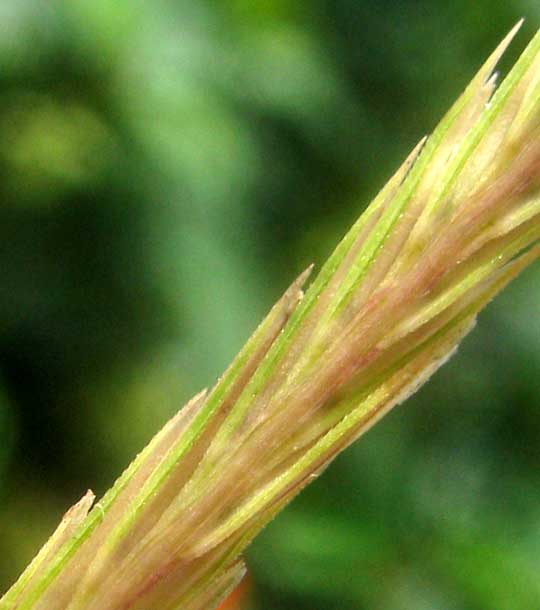Excerpts from Jim Conrad's
Naturalist Newsletter
from the September 25, 2011 Newsletter issued from Mayan Beach Garden Inn 20 kms north of Mahahual; Caribbean coastal beach and mangroves, ~N18.89°, ~W87.64°, Quintana Roo state, MÉXICO
SAND CORDGRASS

Earlier this year I dreaded to take nature walkers past a particular neighbor's entrance road because he'd planted several eye-catching ornamental clumpgrasses there. People always asked me what those grasses were, and I didn't know, because I'd never seen them flowering. The grasses were eye catching because they were big -- about eight feet tall (2.5m) and some twelve feet across (3.5m). That's one of the plants above.
Now the grasses are flowering and I can hereby announce the handsome plant's name: SPARTINA BAKERI. Among its English names are Sand Cordgrass, Dune Cordgrass, Switchgrass, Marsh Grass, and Baker's Cord Grass. Below, a close-up of one of the long, slender, lax, spikelike clusters of racemes is shown:

The slender inflorescences with their closely crammed flowers differentiate Spartina bakeri from other large, ornamental clumpgrasses with more open, feathery flower clusters, such as Pampas Grass, Plume Grass, Maiden Grass and others.
Spartina bakeri is native to the US Southeast where it often grows in marshes and next to lakes. The ones here are on dry sand, but groundwater is just a few feet below. The grass is highly salt tolerant. In other words, here's a handsome species with a lot of potential for landscaping down here, and since new landowners here typically scalp their properties of native vegetation as soon as they arrive, all the help the land can get to stabilize its sand is welcome.